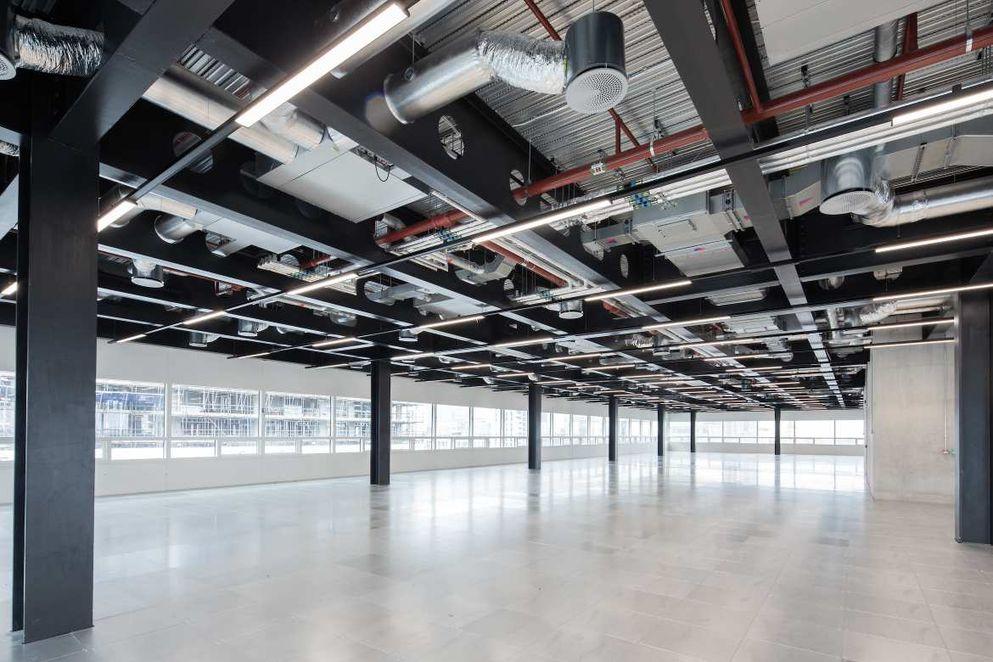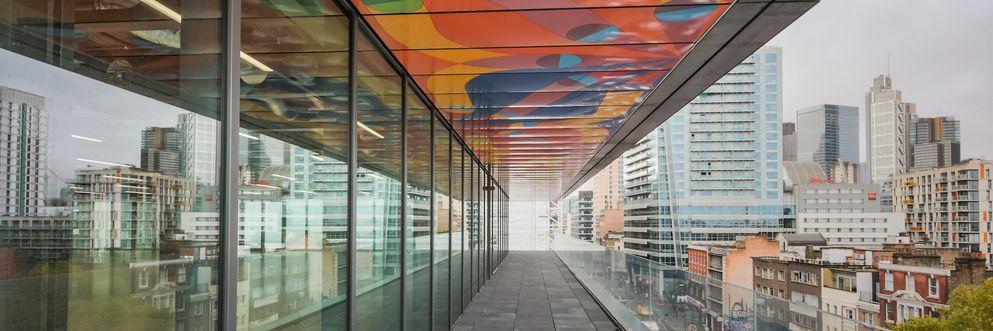
BAM completes prime new office in Whitechapel, London for Frasers Property
BAM completes prime new office in Whitechapel, London for Frasers Property
The Rowe is a high-quality, sustainable office space in Aldgate and uses public art inspired by the local area.
BAM-built The Rowe, in bustling Whitechapel, London, has launched, providing 162,000 sq. ft. of office space. The building is a landmark site for integrated real estate developer, manager and investor, Frasers Property UK, as the company’s first urban office development.
The scheme, which is less than a mile from Bank, Monument and Liverpool Street, also provides over 17,000 sq. ft. of outdoor terraces. A redevelopment of the old London Metropolitan University’s (LMU) School of Art, Architecture, and Design, The Rowe has added six floors to the existing building, with the extension reflecting the design of the original building while marrying it with a modern eye-catching glass, steel, and concrete extension.
Designed by RIBA Stirling Prize-winning architectural practice, Allford Hall Monaghan Morris (AHMM), The Rowe’s former educational interior has been transformed into a modern open-plan workspace. Climate conscious principles underpin every aspect of the scheme from plan to build. The Rowe will run on 100% renewable electricity and will provide a 26% carbon emission reduction compared to a standard office building.
Inspired by the original brutalist design, the 1960s concrete façade has been retained – reducing the carbon emissions for the construction process and uniting the old and the new. Furthermore, the project will achieve a WELL ‘Platinum’ certification, BREEAM ‘Excellent’ rating, and SmartScore ‘Platinum’, as well as a WiredScore ‘Platinum’ for its exceptional connectivity. This is significant and differentiating for the UK market, where there is a shortage of energy-efficient prime office space.

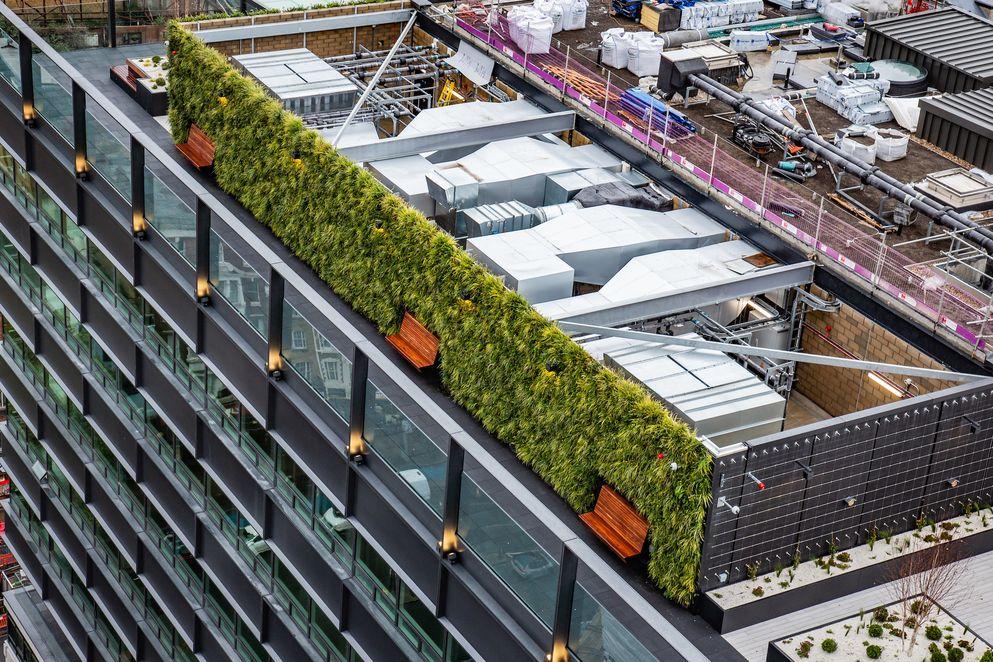
One of the defining aspects of Whitechapel is its diversity and rich cultural history. To respect the area’s past and present, Frasers Property UK worked with art curator, Zoë Allen, on two site-specific public art commissions at The Rowe. One of these is a wrap-around artwork on the terrace of the sixth floor – the top floor of the former building – by Yinka Ilori MBE that has been designed to reflect the long and varied textile traditions of the local community and can be seen from ground level. The other installation, named ‘Loop’, in The Rowe’s reception by Paul Cocksedge Studio uses rhythmic forms in the building’s vertical space to create architectural forms.
Yinka is also an alumnus of the former LMU school, strengthening the relationship of The Rowe with the building’s former use.
Constructed by BAM, The Rowe will also welcome a public café, retail space for occupiers and their guests, adaptable amenities, and a landscaped rooftop terrace.

Gavin Pantlin BAM’s Construction Director said:
“This scheme has been a triumph for us, showcasing how early partnerships can deliver the best outcomes for clients and contractors.
We have created a building that fits perfectly in the modern workplace while giving a nod to the site’s heritage with thoughtful use of colour and art. The technical complexities of The Rowe should not be overlooked either, as this is a very smart building.
BAM is delighted that we’ve helped Frasers Property UK realise its first major incursion into the British urban office market. That makes it a fantastic experience for us all.”
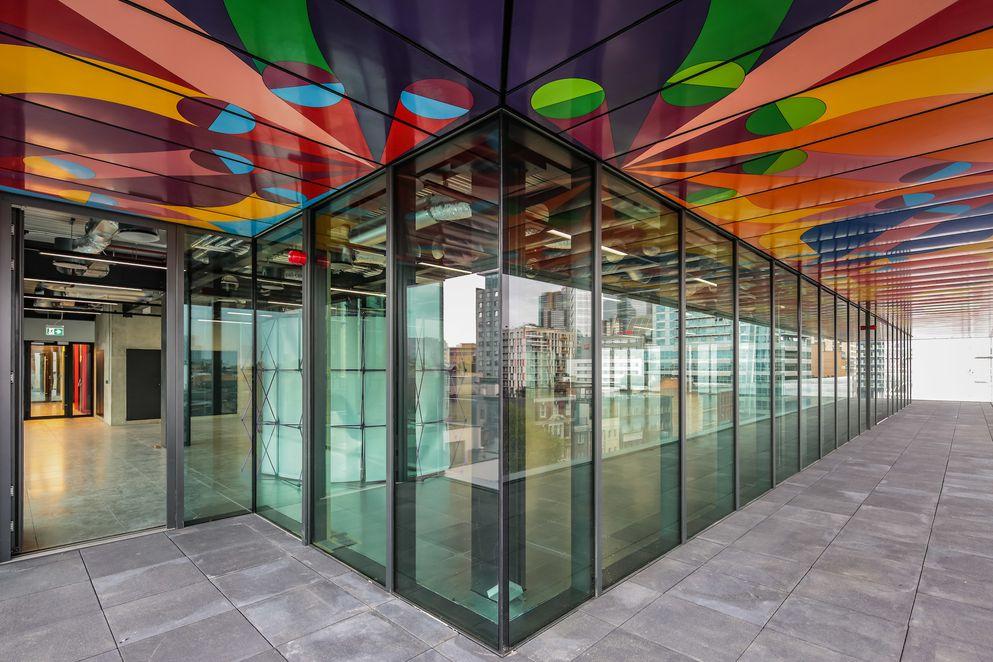
Ilaria del Beato, CEO at Frasers Property UK, said:
“The Rowe is a landmark site for Frasers Property UK, and we strived to create a building that echoes and respects the history of the area, both in terms of community and art with The Rowe sitting opposite Whitechapel Gallery.
“The Rowe rethinks communal spaces to encourage and support social interaction and greater wellbeing. As businesses embed agile working practices and seek to leverage the benefits of our cities and offices, we, as developers, need to be doing all we can to support them. That’s why we aim to develop high-quality office space while also creating a sense of place.”
Yinka Ilori MBE, said:
"The Rowe has been an incredibly special project for me. As the former home of London Metropolitan University's School of Art, Architecture, and Design, it is where I began my journey as a designer and where I have so many fond memories. I feel a deep connection with Whitechapel and Brick Lane and have seen the area transform. To be invited to create an artwork that is a part of the next iteration of the building, and which reflects East London's rich history and diverse cultures, has been an honour."
Paul Cocksedge, co-founder of Paul Cocksedge Studio, said:
“Whitechapel’s garment and textile history dates back hundreds of years, and our installation at The Rowe pays homage to this – creating a fluid, rhythmic piece that invites visitors to sit, rest, and contemplate. The piece balances weight and structure with a visual lightness, utilising a hybrid mix of structural and decorative fabric, developed specifically for this artwork, and harking back to the area’s connections with textiles.”
Zoë Allen, art consultant and founder of Artistic Statements, said:
“It’s so encouraging to see a developer embrace art, creating a truly impressive building like The Rowe that respects the local culture and history. Yinka and Paul are remarkable creative talents, and the intelligence, playfulness, and thought-provoking nature of their installations is testament to this.”
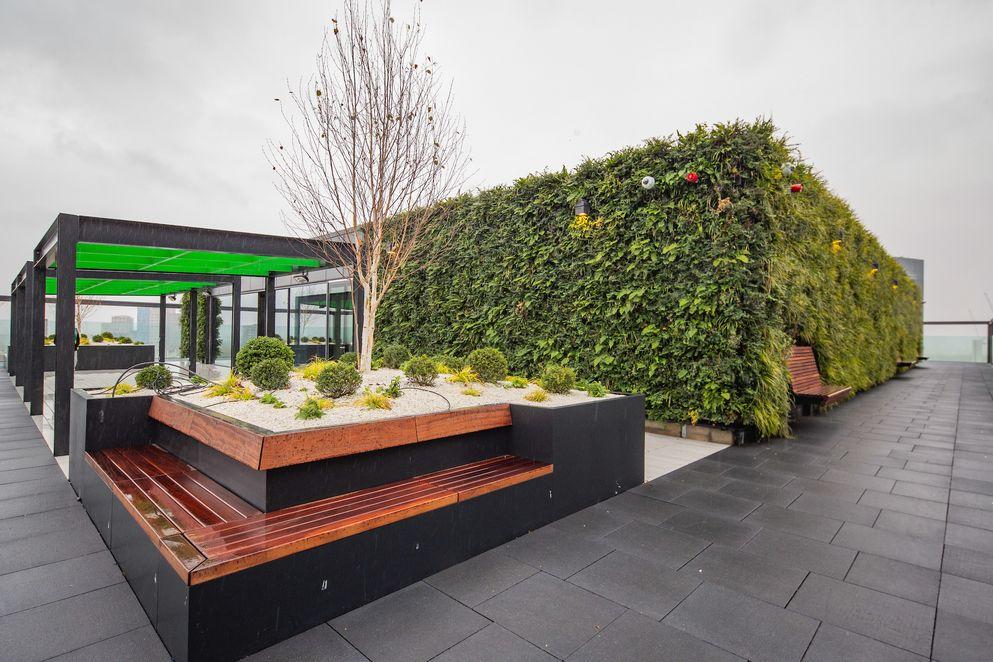
Paul Monaghan, Executive Director of Allford Hall Monaghan Morris, said:
“The Rowe was originally an educational building and was important to the shared memory of the local community. This fed into the proposal to retain and extend the building, as we retained the original 1960s façade and glazing, whilst providing a transition between old and new with the newly constructed six additional floors sitting on top of the original six storeys. Retaining the facade reduced the embodied carbon in the construction.
Every floor benefits from some external space. On the lower levels this is on the roofs and balconies of the infill buildings and large projecting terraces are accessed directly from the lift lobbies on the upper floors. The roof terrace has space for working and events with planting visible from the street.”
